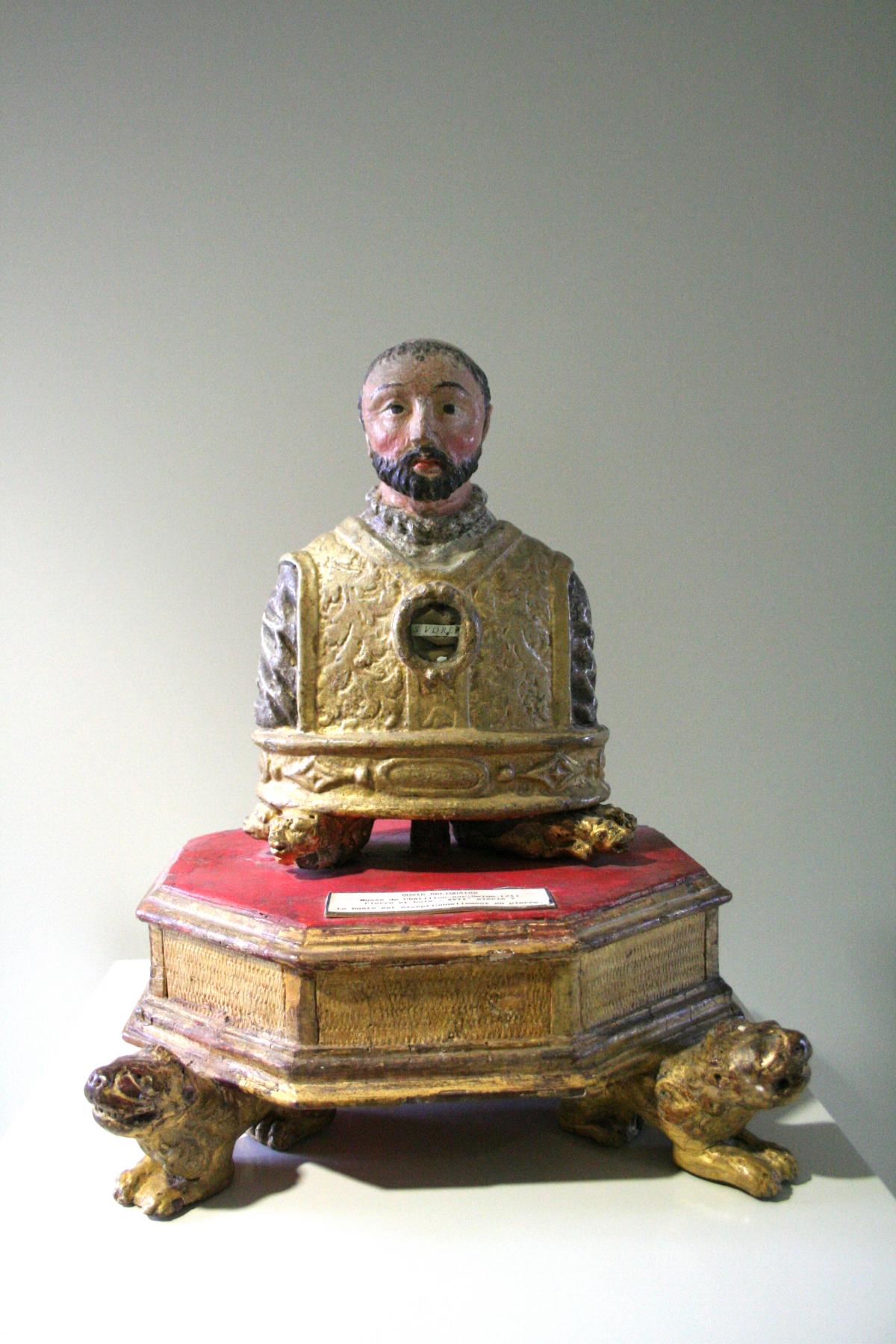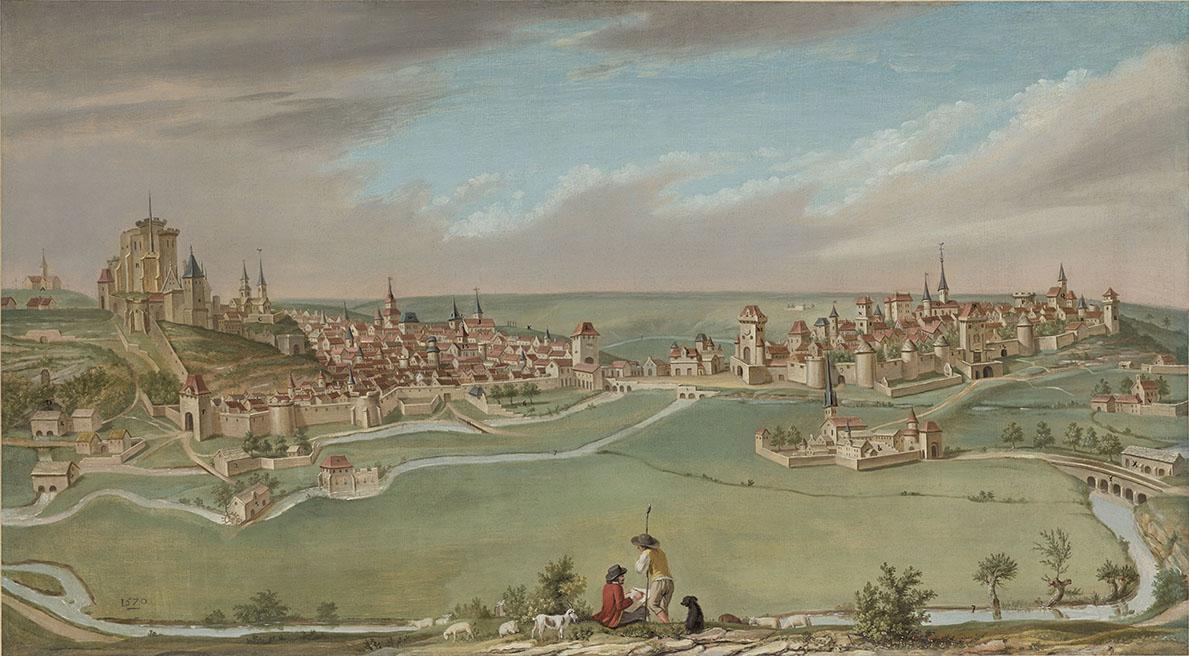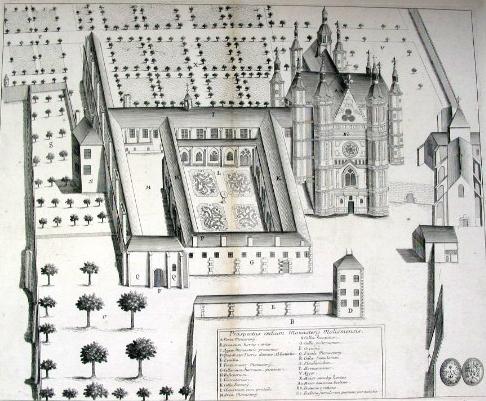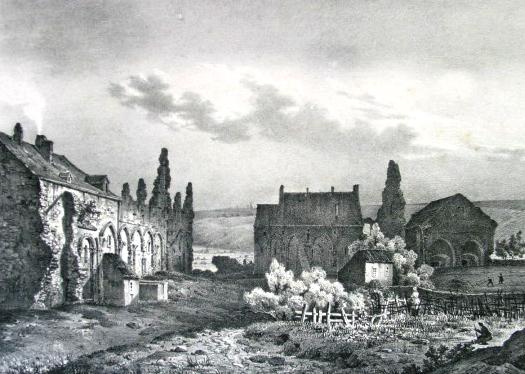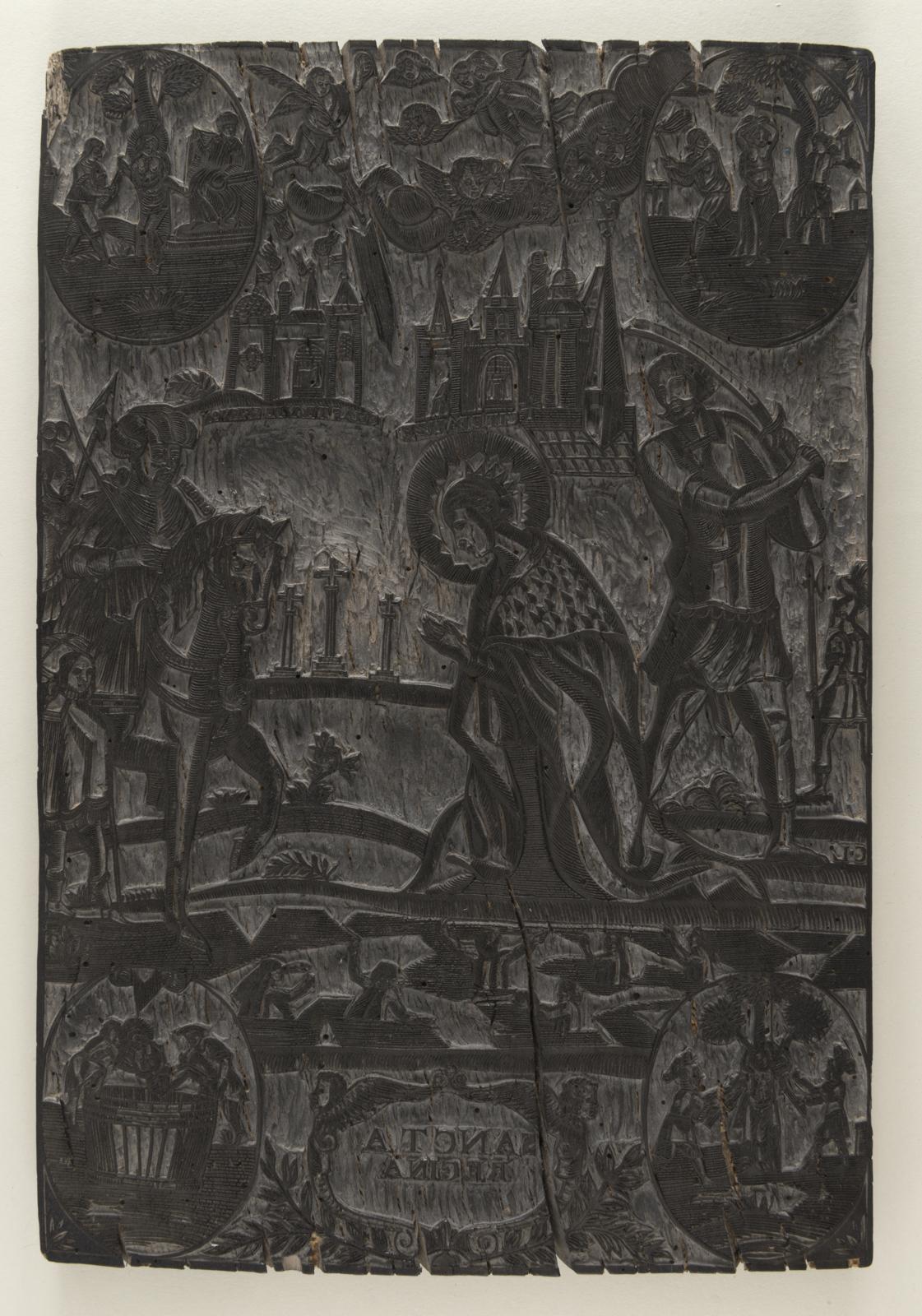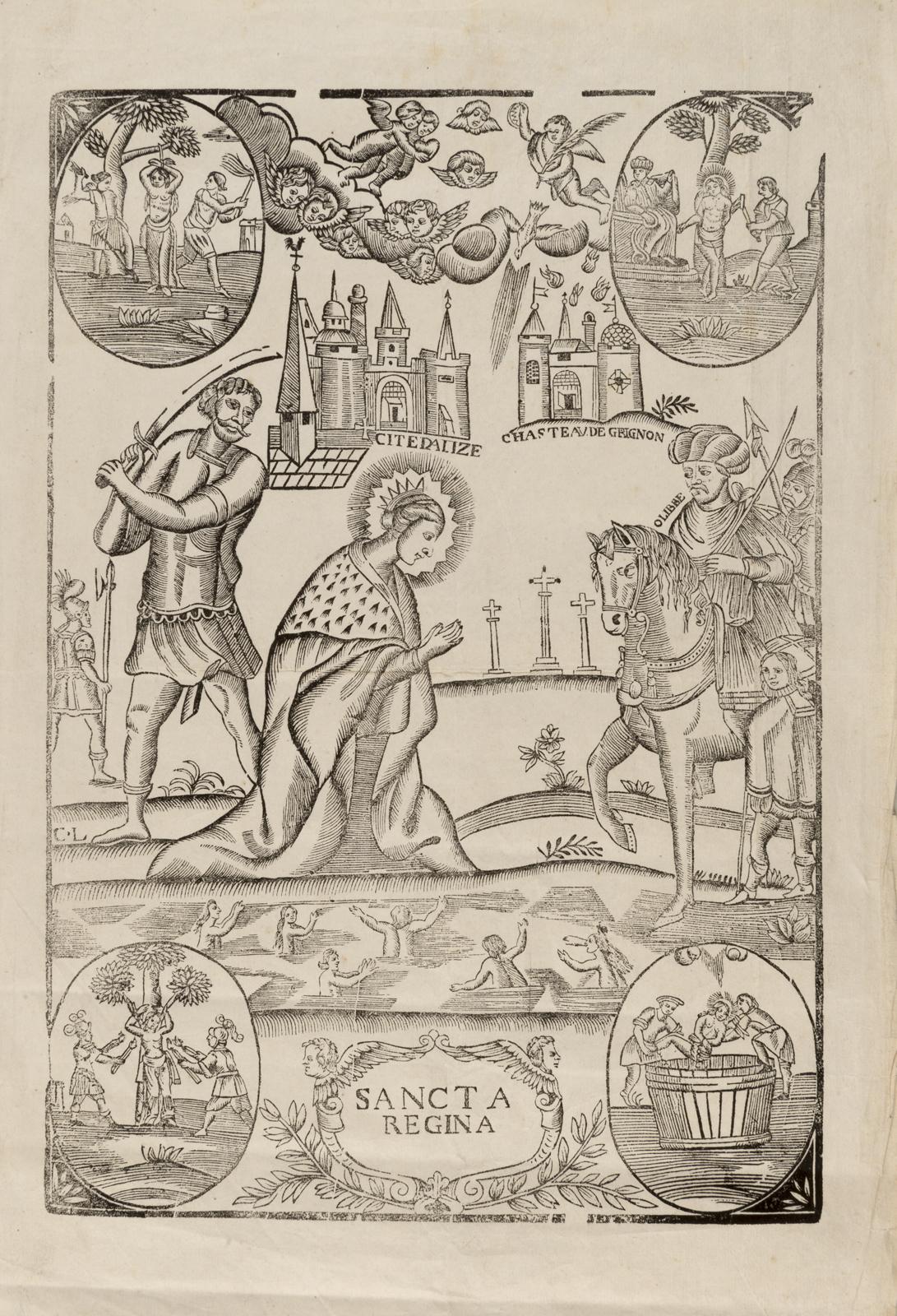This painted wooden panel illustrates the legend of Saint Vorles. These may be remnants of cabinet doors that once held the shrine of Saint Mammès, bishop of Langres in the late 12th century.
Saint Vorles, haloed in gold and wearing a purple cloak, rescues a child from a burning house—an episode showing his miraculous gift of bilocation. In the 6th century, while celebrating Mass in Marcenay with King Guntram, he entered a deep meditation. Upon returning, he claimed to have saved a child in a distant village. Riders sent by the king confirmed it. In the late 9th century, to protect his relics from Norman invasions, the bishop of Langres had them moved to the fortified town of Châtillon-sur-Seine.


